Table of Contents
** Minutes
How to create a shipping label
Perfect shipping labels every time with a 3PL (like ShipBob)
Shipping labels may seem like a tiny piece of the ecommerce puzzle, but they are critical to both inbound and outbound logistics and are vital to your online store’s success and customer satisfaction. Shipping labels share important information with your supply chain, helping technology and people alike understand the origins and destination of your package.
Without clear shipping labels, your customers’ orders could be lost or mishandled, creating a bad customer experience, damaging brand loyalty, and ultimately losing sales.
This article will cover the information included on a shipping label, how to create shipping labels for self-fulfilled orders, and how a third-party logistics (3PL) provider can help take the hassle out of the shipping process.

What is a shipping label?
Shipping labels display important information about a package’s destination to a carrier during transportation. These labels help describe and specify where the package is going, and in the cases of international shipments, what’s inside a package.
Pertinent information on a shipping label includes postal code, country, tracking number, weight, destination address, return address, shipping method (expedited, standard, etc.), and more.
Why are shipping labels important?
Shipping labels are important because they clearly display the information couriers need to deliver packages from their start destination (either a warehouse or fulfilment centre) to their end destination (customer’s doorstep).
If shipping labels are incorrect or not included on a parcel, packages can be:
- Delayed in transit
- Delivered to the wrong address
- Lost entirely
As a result, customers may have a negative experience with your brand and the following could occur:
- Negative customer reviews posted online
- Social media posts about their experience
- Turn to a competitor
Understanding shipping labels
Shipping labels contain a multitude of information, making them difficult to understand. We’ll break down the important information on different shipping labels so you know how to read them.
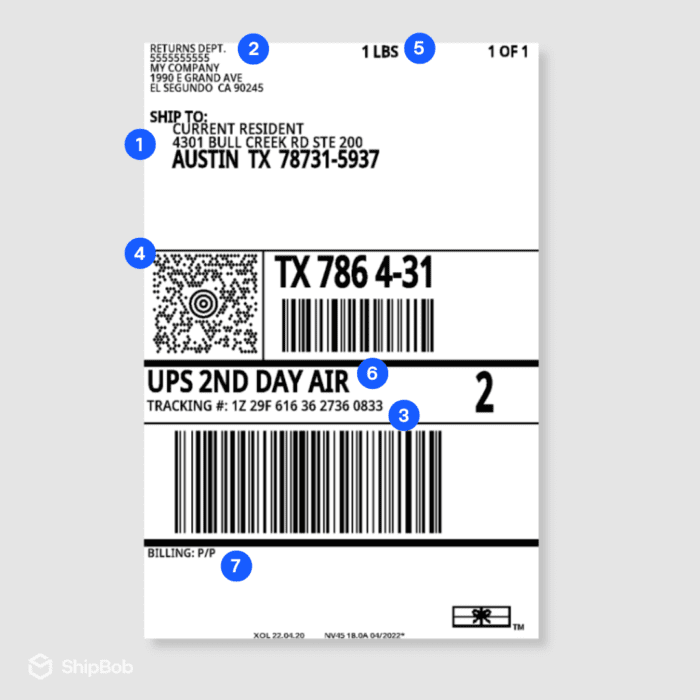
NOTE: The standard shipping label size is 4×6 inches or 10×15 centimeters.
1. Recipient name, address, and phone number
This information informs the carrier where to deliver the parcel and provides a way to contact the recipient if there are any issues during the delivery process.
It’s important for this information to be accurate so the package is delivered to the person who ordered it.
2. Sender address
The sender’s address should be included on the shipping label so the carrier knows where the parcel should be returned if it can’t be delivered to the recipient’s address.
Having the sender’s address on the label also lets the recipient know where the package originated. This helps extend the brand experience to unboxing.
3. Tracking number and barcode
The unique tracking barcode on a package’s shipping label helps the carrier track the shipment’s progress during transit. The shipping barcodes are scanned when the parcel enters or leaves a carrier facility.
The tracking number matches the barcode so customers can track their package through the carrier’s site.
4. Unidirectional or QR code
The unidirectional code, MaxiCode, or QR code on the shipping label is a symbol that is read by a machine. These codes have a digital version of the information found on the shipping label.
5. Weight
Weight is displayed on the shipping label so appropriate shipping rates can be calculated. Additionally, having weight clearly outlined on the label ensures that packages are loaded onto trucks efficiently and that weight restrictions are taken into consideration.
6. Shipping method
The shipping class is included on shipping labels to provide information about how the package should be handled and helps couriers determine if the package needs special handling or requires expedited shipping.
This is especially important if your online store offers more than one shipping option, such as expedited shipping which is significantly more expensive; you want to make sure that customers get what they pay for and expect.
7. Payment
The shipping label will also show whether or not postage has been paid; if you are pre-paying and printing shipping labels online, or if you work with an order fulfilment provider, the shipping label will be marked as paid.
In the example UPS shipping label above, “P/P” means the shipping label has been pre-paid. Different delivery services have different codes for payment.
How to create a shipping label
In order to save time and money, you can create your own shipping labels. In doing this, you can take advantage of various discounts and even have the carrier pick up packages directly from your home or facility.
If you’re interested in creating your own labels but aren’t sure where to start, we’ve outlined the steps to walk you through the process.
Go through your local carrier website
First, you’ll want to go to your preferred carrier’s website to create the shipping label. You’ll want to fill out the shipping label template, download it, print it, and attach it to your parcel.
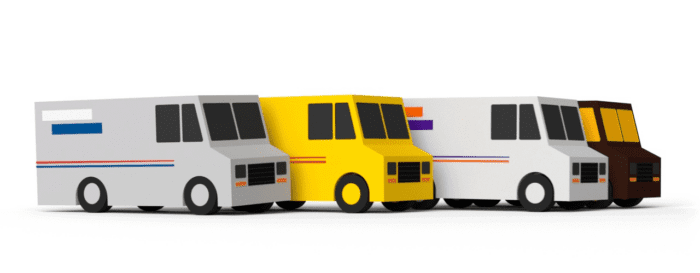
You can complete this entire process on the carrier’s website. Here’s a list of the most common couriers:
Ensuring proper network settings can also be crucial for seamless access to these online tools. If you need guidance on configuring your network, this mac ip address guide can be very helpful.
Download a shipping label template
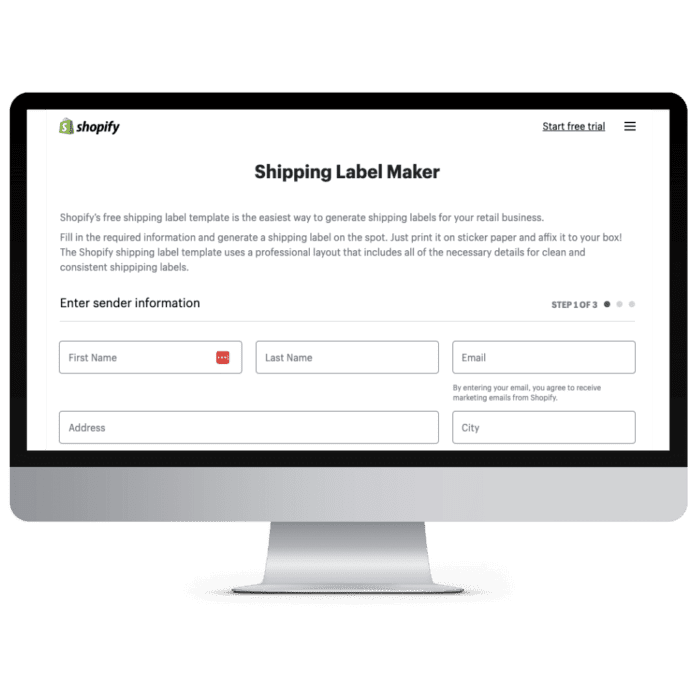
There are plenty of shipping label templates available online – many of them being a free resource for business owners. For example, Shopify has a free shipping label template tool.
You enter your relevant information such as sender information, receiver information, and shipping information (e.g., shipping date, package weight) and the template maker will create a shipping label for you.
Adopt a third-party solution
Shipping can be challenging. There are many nuances that make shipping difficult, and if not done properly, it can result in customers not receiving their orders on time (or at all).
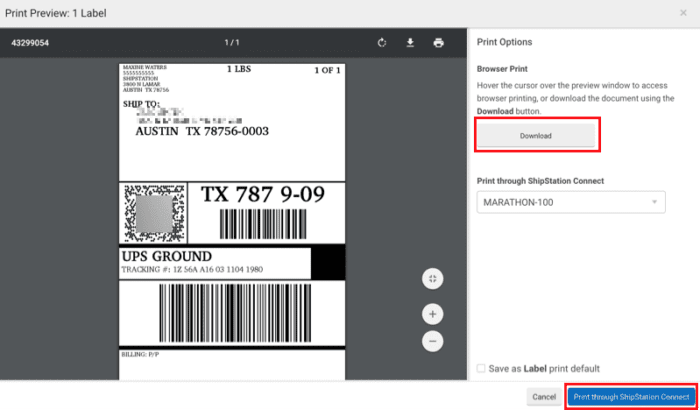
Using a shipping software like ShipStation would be a useful tool if you’re shipping more than 10 orders per week. A more robust label generation software can help you streamline the shipping process and save you money.
You can also partner with a third-party logistics provider like ShipBob to ship orders on your behalf.
Include every piece of required information
Shipping label errors can be common and sometimes relevant information is left off. Here are the most important fields to include:
- Sender name, street address, city, postal code, country, state
- Recipient name, street address, city, postal code, country, state
- Recipient phone number
- Shipping date, tracking number, and package weight
Securely attach your shipping label
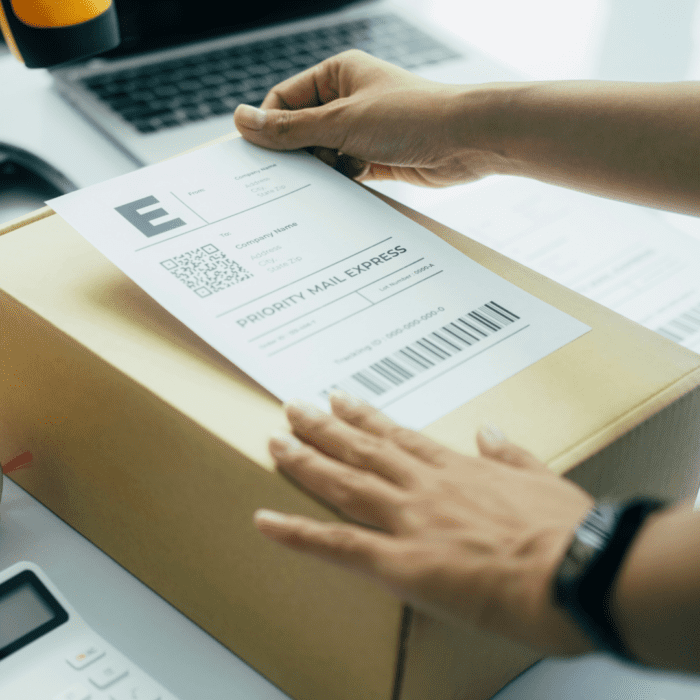
Once you’ve created your shipping label, you’ll want to make sure it’s securely attached to your package so it will make it to its final destination. Place the adhesive label on the package so it sticks well to the box or mailer. If the label comes off during transit, the package may not make it to its final destination.
Additionally, make sure to adhere the sticker to the flat side of a package, so as to not fold or obscure the barcode, which can cause issues during sorting and transit.
Shipping label best practices
Consider these best practices when you’re creating shipping labels for your orders.
Understanding your shipping needs
Having a clear understanding of your shipping needs is an important step in the shipping label generation process. Prior to shipping goods, you should become familiar with the various rules and regulations associated with what you’re shipping. Fragility, perishability, hazardous materials, or special instructions should be taken into consideration.
For example, if you’re shipping items like perfume or hand sanitizer, you’ll need to research the shipping methods for hazardous materials and make sure all of the relevant information is displayed on the shipping label.
In the end, doing research to understand your shipping needs ahead of time will save you time and improve your customer’s shipping and delivery experience.
Double-checking the shipping information
As mentioned above, it’s incredibly important to have accurate information on your shipping labels. If any of the information is incorrect, the package may be held up at the carrier’s facility or delivered to the wrong address. As a result, your brand’s reputation could suffer.
A good way to prevent this is to double-check the information on the label before the package is sent out. Validating the street address, confirming the postcode, and verifying the weight of the package are measures you can take to make sure the package will arrive at the customer’s door.
Have the shipping capital ready
Shipping costs should be a part of every ecommerce business’s budget so they have the capital to send out the orders they receive.
Depending on package size, weight, and destination, shipping packages can be expensive. Businesses should budget a minimum of $8 USD per package for mailing expenses.
However, brands can work with a shipping platform like ShipStation or a 3PL like ShipBob to secure the best shipping rates possible.
Partner with a shipping carrier
Partnering with a shipping carrier has become easier than ever. Major couriers like USPS, FedEx, UPS, and DHL have made the shipping process very user-friendly since the step-by-step process can be completed online.
You can also compare couriers to see which one would be the best fit for your business. You can explore the benefits of USPS vs. UPS vs. FedEx to find the right carrier for your brand depending on the products offered, shipping destination, and more.
You can integrate your ecommerce platforms with shipping couriers to allow for efficient order processing, automated shipping label creation, and access to real-time tracking data. For example, ShipBob directly integrates with DHL, FedEx, USPS, and UPS.
Partner with a 3PL
Utilising a third-party provider like ShipBob allows you to outsource your ecommerce fulfilment so you don’t have to create your own shipping labels, pack and ship orders, or make trips to the post office or carrier storefront. With order fulfilment off your plate, you can focus on scaling your business.
Perfect shipping labels every time with a 3PL (like ShipBob)
By partnering with a third-party logistics provider like ShipBob, you can take the guesswork out of shipping labels and ensure your packages have the right information every time.
Outsourcing order fulfilment to a 3PL that purchases and generates shipping labels for you takes the hassle and stress out of label creation. All you need to do is pay for shipping, and then ShipBob will make sure your customers’ orders are labelled and shipped properly.
ShipBob has negotiated volume discounts with major couriers such as DHL, USPS, and UPS, to ensure the low shipping prices are passed on to you and your customers.
Ecommerce businesses have plenty of obstacles to overcome, and shipping shouldn’t be one of them. For example, accessory brand Ocean & Co. knew they didn’t want to focus their time and resources into fulfilment, which is why they partnered with ShipBob.
“We looked into opening our own warehouses and hiring employees, but couldn’t come close with what 3PLs charge for picking, packing, and shipping. We’d also be worried about scheduling fulfilment shifts, ordering boxes and shipping labels, and dealing with the extra headaches of running logistics. Most of all, those are hours we’d spend on tasks that are not scaling our business when we could be using those resources for growth. You should spend time doing what you do best, and fulfilment is an easy task to take off your plate.”
– Gerard Ecker, Founder & CEO of Ocean & Co.
Have a warehouse and need a WMS?
If you already have a warehouse and need a warehouse management solution to help you manage orders, inventory, and shipping, ShipBob’s WMS solution might be the best fit for your brand. Our all-in-one platform makes it easy for you to manage your pick and pack processes, reporting and analytics, shipping, and more.
Whether you’re interested in outsourcing order fulfilment or using a warehouse management system to fulfil orders and create shipping labels in-house, ShipBob has fulfilment solutions for brands of all sizes.
Get started with ShipBob by connecting with our team and identifying the solution that’s the best fit for your business.
Shipping label FAQs
Here are answers to the most commonly asked questions about shipping labels.
Where do you get a shipping label?
If you’re self-fulfilling orders, there are several options for generating shipping labels. You can simply print and pay for labels directly from carrier websites, or if you’re looking for a more robust solution, ShipStation makes it easy to generate shipping labels online and connects with all major shipping couriers.
If you partner with a 3PL like ShipBob, all you’d have to do is pay for shipping and your 3PL will purchase and generate shipping labels on your behalf. Your online store platform may also offer a service to generate labels as well.
Are shipping labels free?
Generating a shipping label is free, but you won’t be able to ship the package until postage has been paid for.
Can I print out a shipping label at home?
Yes, you can print a shipping label at home. Major shipping couriers offer online services that make it easy to generate shipping labels from home. Here are some of the online tools major shipping couriers offer online:
- USPS: Click-N-Ship
- FedEx: FedEx Ship Manager Lite
- UPS: Create a Shipment
- DHL: My DHL Express (US only)
You can easily insert package weight, dimensions, destination address, and shipping class, and the carrier will automatically generate a barcode.
Can I handwrite a shipping label?
You can handwrite the shipping address (as long as it’s eligible), but you will still need a carrier barcode, which needs to be generated by the carrier.
Depending on the volume of orders you’re fulfilling, handwriting shipping addresses can become time-consuming. You’re better off using the variety of online tools that make the process easy and more time efficient.
Where can I print USPS shipping labels?
You can easily generate and print a USPS shipping label by using the Click-N-Ship online tool.
How much are UPS shipping labels?
Generating a shipping label through UPS is free, but you will still need to pay for postage, and any additional services, like tracking and shipping insurance options.
Can you tape over a shipping label?
Yes, as long as it’s clear tape, and the shipping address and barcode are 100% visible.






